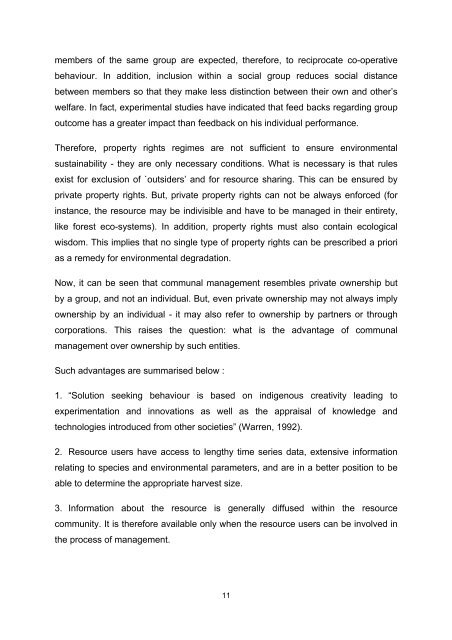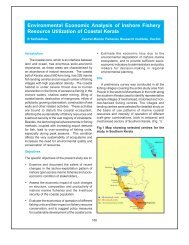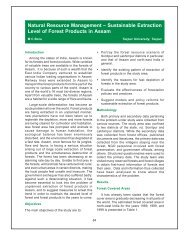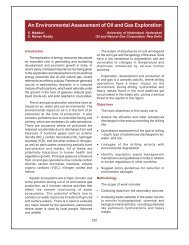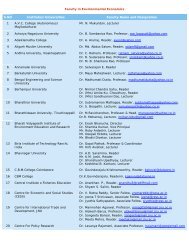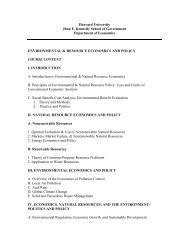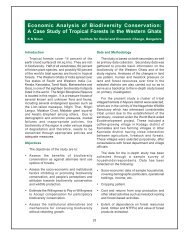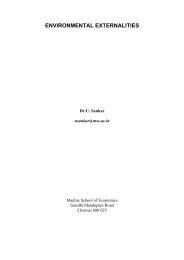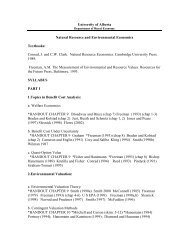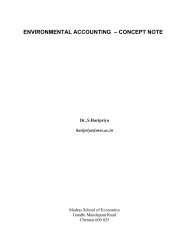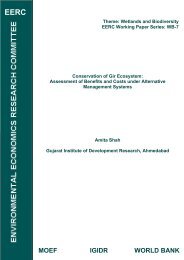PDF 3.08 MB
PDF 3.08 MB
PDF 3.08 MB
Create successful ePaper yourself
Turn your PDF publications into a flip-book with our unique Google optimized e-Paper software.
members of the same group are expected, therefore, to reciprocate co-operative<br />
behaviour. In addition, inclusion within a social group reduces social distance<br />
between members so that they make less distinction between their own and other’s<br />
welfare. In fact, experimental studies have indicated that feed backs regarding group<br />
outcome has a greater impact than feedback on his individual performance.<br />
Therefore, property rights regimes are not sufficient to ensure environmental<br />
sustainability - they are only necessary conditions. What is necessary is that rules<br />
exist for exclusion of `outsiders’ and for resource sharing. This can be ensured by<br />
private property rights. But, private property rights can not be always enforced (for<br />
instance, the resource may be indivisible and have to be managed in their entirety,<br />
like forest eco-systems). In addition, property rights must also contain ecological<br />
wisdom. This implies that no single type of property rights can be prescribed a priori<br />
as a remedy for environmental degradation.<br />
Now, it can be seen that communal management resembles private ownership but<br />
by a group, and not an individual. But, even private ownership may not always imply<br />
ownership by an individual - it may also refer to ownership by partners or through<br />
corporations. This raises the question: what is the advantage of communal<br />
management over ownership by such entities.<br />
Such advantages are summarised below :<br />
1. “Solution seeking behaviour is based on indigenous creativity leading to<br />
experimentation and innovations as well as the appraisal of knowledge and<br />
technologies introduced from other societies” (Warren, 1992).<br />
2. Resource users have access to lengthy time series data, extensive information<br />
relating to species and environmental parameters, and are in a better position to be<br />
able to determine the appropriate harvest size.<br />
3. Information about the resource is generally diffused within the resource<br />
community. It is therefore available only when the resource users can be involved in<br />
the process of management.<br />
11


